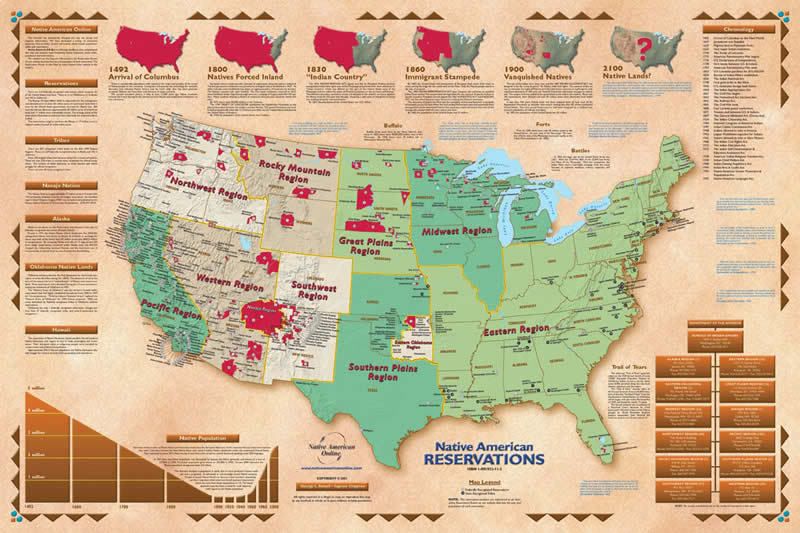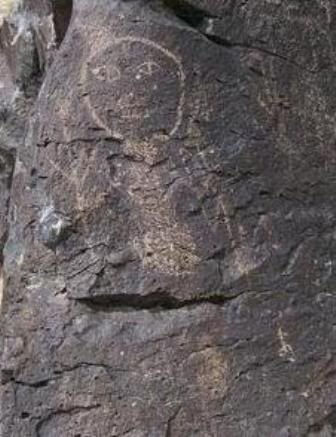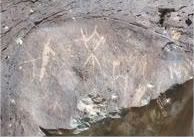by Winter Rabbit | 11/24/2009 09:27:00 PM
Chief Black Kettle:
I want you to give all these chiefs of the soldiers here to understand that we are for peace, and that we have made peace, that we may not be mistaken by them for enemies.
A Cheyenne cemetery is in the same direction as where my mother told me she watched gypsies camp through her west window as a girl, about ½ mile from that house. I have reverently walked though that Cheyenne cemetery as early as ten, looking at the headstones and wondering who they were and where they came from. I did not know then, that in that cemetery were descendants from the Sand Creek Massacre.
The Approaching Genocide Towards Sand Creek
Simultaneously, Roman Nose led the Dog Soldiers in battle while Black Kettle strove for peace.
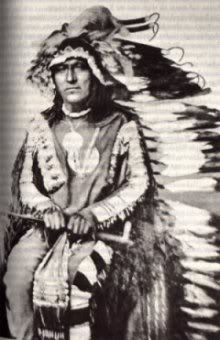
Source
"...Roman Nose made his record against the whites, in defense of territory embracing the Republican and Arickaree rivers. He was killed on the latter river in 1868, in the celebrated battle with General Forsythe.
Roman Nose always rode an uncommonly fine, spirited horse, and with his war bonnet and other paraphernalia gave a wonderful exhibition. The Indians used to say that the soldiers must gaze at him rather than aim at him, as they so seldom hit him even when running the gantlet before a firing line..."
Why did Roman Nose and the Hotamitanio (Dog Soldier Society) feel the need to defend their sovereignty and way of life? The answers to that one question rest in at least the following: the Great Horse Creek Treaty (1851 Treaty of Fort Laramie), volunteer soldiers, John Chivington, white encroachment with the Pike's Peak gold rush of 1858, the "renegotiation" of the "Great Horse Creek Treaty" at Fort Wise, the Civil War soldiers who encroached on promised land, and the murder of Lean Bear.
The first core point is that hunting rights and land claims were not surrendered in the Great Horse Creek Treaty (1851 Treaty of Fort Laramie).
1851 TREATY OF FORT LARAMIE
The following are facts with regard to the 1851 TREATY OF FORT LARAMIE, known as the "Treaty of Long Meadows" to the N/DN/D/Lakota and the "Great Horse Creek Treaty" to the Cheyenne;
1. It is a sacred document, unanimously agreed upon by each camp of each band, of each of the seven signatory nations. During the three week long 1851 Treaty gathering, the sacred White Buffalo Calf Canunpa (misnomer "Peace pipe") of the N/DN/D/Lakota, the Four Sacred Arrows of the Cheyenne, as well as the most sacred items of each of the other nations were present during the historic signing.
2. It is a unifying document among the seven allied nations to forever protect their sacred homelands.
Second of all, the Pike's Peak gold rush of 1858 brought white encroachment by ways of pony express riders, telegraph wires, stagecoaches, and more and more military forts whose soldiers (at least in the Sand Creek Massacre) included volunteer soldiers under the command of Col. John Chivington.(1)
To illustrate, here is a poster from 1864 that portrays the recruitment of volunteer soldiers, which helped to result in the California terrorist attacks. That was the same year as the Sand Creek Massacre.
GENOCIDE AGAINST NATIVE AMERICANS HISTORY: THE CALIFORNIA STORY
ATTENTION!
INDIAN
FIGHTERS
The 1849 agreement between California territorial and federal governments provided $1,000,000 for the arming and supply of persons who would seek out and destroy Native American families.
I don't know if such posters were in or near Colorado, but John Chivington who led the "Bloody Third" scorned Indian children.
http://www.geocities...
COL. JOHN CHIVINGTON: Ex-Methodist Minister, Heroic Indian Fighter, 1864
"Nits make lice,"
he was fond of saying, and of course, since Indians were lice, their children were nits. Clearly, Chivington was a man ahead of his time: it would be almost a century later before another man would think of describing the extermination of a people "the same thing as delousing": Heinrich Himmler. [LN477]
Clearly, Roman Nose had a more than sufficient reason to defend his people.
Matters continued becoming worse for the Cheyenne and Arapaho as the white encroachment increased dramatically with the Pike's Peak gold rush of 1858, despite the land being promised them in the Great Horse Creek Treaty (1851 Treaty of Fort Laramie). The Territory of Colorado was then "declared" a decade after that treaty, and politicians wanted to "renegotiate" the Great Horse Creek Treaty at Fort Wise. It was far from a compromise, it was theft.
Source
ARTICLE 1.
"The said chiefs and delegates
of said Arapaho and Cheyenne tribes of Indians do hereby cede and relinquish to the United States all lands now owned, possessed, or claimed by them, wherever situated, except a tract to be reserved for the use of said tribes located within the following described boundaries, to wit:..."
Some "negotiation..." 38 of the 44 Cheyenne chiefs did not sign it.
Dee Brown. "Bury My Heart At Wounded Knee." p. 69:
"...When the Cheyennes pointed out that only six of their forty-four chiefs were present, the United States officials replied that the others could sign it later..."(1)
Adding still more misery, were facts that hunting was scarce on this land tract, nor was it suited well to farming. Also, the white encroachment from the Pike's Peak gold rush escalated, while Civil War soldiers roamed onto their grounds. Then, Chivington, the butcher of Sand Creek, began his campaign of extermination and genocide.
Source
In the spring of 1864, while the Civil War raged in the east, Chivington launched a campaign of violence against the Cheyenne and their allies, his troops attacking any and all Indians and razing their villages. The Cheyennes, joined by neighboring Arapahos, Sioux, Comanches, and Kiowas in both Colorado and Kansas, went on the defensive warpath.
Chief Black Kettle was promised complete safety by Colonel Greenwood as long as he rose the U.S flag above him.(1) Black Kettle persisted in his calls for peace in spite of the continuing exterminations and the shooting of Lean Bear.
(All bold mine)
Source
Lean Bear, a leading peacemaker who had previously met with President Abraham Lincoln in Washington, D.C., was shot from his horse without warning by U.S. troops during a Kansas buffalo hunt.
The troops were acting under orders from Colonel John M. Chivington who commanded the military district of Colorado: "Find Indians wherever you can and kill them" (The War of the Rebellion, 1880-1881, pp. 403-404).
Perplexed by the continuing genocide, Black Kettle sent for Little White Man, known asWilliam Bent.Almost prophetic, both agreed in their meeting that a war was about to be born if nothing changed. Black Kettle's peaceful attempts tragically failed, even though he took his people to Sand Creek, fully expecting peace.His last effort for peace was raising the U.S. flag just prior to the massacre.
Source
"...Though no treaties were signed, the Indians believed that by reporting and camping near army posts, they would be declaring peace and accepting sanctuary.
However on the day of the "peace talks" Chivington received a telegram from General Samuel Curtis (his superior officer) informing him that "I want no peace till the Indians suffer more...No peace must be made without my directions."
Chivington, the Butcher of the Sand Creek Massacre:
COL. JOHN CHIVINGTON: Ex-Methodist Minister
"Nits make lice,"
he was fond of saying, and of course, since Indians were lice, their children were nits. Clearly, Chivington was a man ahead of his time: it would be almost a century later before another man would think of describing the extermination of a people "the same thing as delousing": Heinrich Himmler. [LN477]
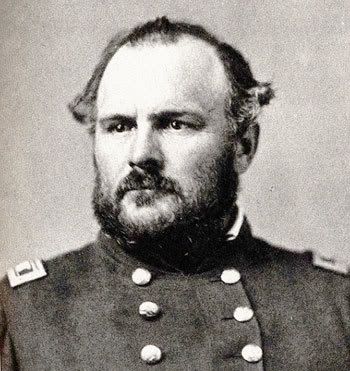
http://www.forttours.com/images/chivington.jpg
Source
"the Cheyennes will have to be roundly whipped -- or completely wiped out -- before they will be quiet. I say that if any of them are caught in your vicinity, the only thing to do is kill them." A month later, while addressing a gathering of church deacons, he dismissed the possibility of making a treaty with the Cheyenne: "It simply is not possible for Indians to obey or even understand any treaty. I am fully satisfied, gentlemen, that to kill them is the only way we will ever have peace and quiet in Colorado."
(It is worth noting also that the Fuhrer from time to time expressed admiration for the "efficiency" of the American genocide campaign against the Indians, viewing it as a forerunner for his own plans and programs.)
Unaware of Curtis's telegram, Black Kettle and some 550 Cheyennes and Arapahos, having made their peace, traveled south to set up camp on Sand Creek under the promised protection of Fort Lyon. Those who remained opposed to the agreement headed North to join the Sioux.
The Sand Creek Massacre of November 29, 1864
Black Kettle and his people had every reason to expect complete safety from their bloodshed after agreements for peace were made and the Dog Soldiers left to join the Sioux. Nonetheless, Chivington's troops advanced on the Cheyenne and Arapaho near dawn. The sound of those approaching hooves must have sounded ominous.
U.S. soldiers inevitably chased the defenseless Cheyenne and Arapaho by horse and foot with knives and guns in hand. Their victims had to be positioned before ripping off their scalps, cutting off their ears, smashing out their brains, butchering their children, tearing their breastfeeding infants away from their mother's breasts, and then murdering those infants. The "Bloody Third" soldiers necessarily had to kill the infants before cutting out their mother's genitals.
The one question I never saw asked in the congressional hearings was, "Didn't you disgraceful soldiers realize they were family?"
Kurt Kaltreider, PH.D. "American Indian Prophecies." pp. 58-59:
-The report of witnesses at Sand Creek:
"I saw some Indians that had been scalped, and the ears cut off the body of White Antelope," said Captain L. Wilson of the first Colorado Cavalry. "One Indian who had been scalped had also his skull smashed in, and I heard that the privates of White Antelope had been cut off to make a tobacco bag of. I heard some of the men say that the privates of one of the squaws had been cut out and put on a stick..."
John S. Smith...
All manner of depredations were inflicted on their persons; they were scalped, their brains knocked out; the men used their knives, ripped open women, clubbed little children, knocked them in the heads with their guns, beat their brains out, mutilated their bodies in every sense of the word...worse mutilation that I ever saw before, the women all cut to pieces...children two or three months old; all ages lying there.
From sucking infants up to warriors.
Sand Creek being a deliberate massacre is not contested, especially since the "Bloody Third" set the village in flames and took all the evidence back to Washington to hide it.
Source
Letters written by those at Sand Creek From Lt. Silas Soule to Maj. Edward Wynkoop, Dec. 14, 1864:
"The massacre lasted six or eight hours...I tell you Ned it was hard to see little children on their knees have their brains beat out by men professing to be civilized....They were all scalped, and as high as a half a dozen [scalps] taken from one head. They were all horribly mutilated...You could think it impossible for white men to butcher and mutilate human beings as they did there, but every word I have told you is the truth, which they do not deny...I expect we will have a hell of a time with Indians this winter."
Source
Before departing, the command, now the "Bloody Third", ransacked and burned the village.
The surviving Indians, some 300 people, fled north towards other Cheyenne camps.
Medicine Calf Beckwourth sought Black Kettle to ask him if peace was yet possible, but Black Kettle had moved out to be with relatives. Leg-in-the-Water replaced him as the primary chief; so, Beckwourth asked Leg-in-the-Water if there could be peace. Principle chief Leg-in-the-Water responded with these powerful words.
Dee Brown. "Bury My Heart At Wounded Knee." p. 94:
"The white man has taken our country, killed all of our children. Now no peace. We want to go meet our families in the spirit land. We loved the whites until we found out they lied to us, and robbed us of what we had. We have raised the battle ax until death."(1)
Source
...despite broken promises and attacks on his own life, speak of him as a great leader with an almost unique vision of the possibility for coexistence between white society and the culture of the plains…
”Bury My Heart at Wounded Knee” by Dee Brown. p. 92.
Chivington and his soldiers destroyed the lives or the power of every Cheyenne and Arapaho chief who had held out for peace with the white men.
Thanks to Meteor Blades from a previous post of this diary
Here are some of the names of those reputed to have been killed at Sand Creek, according to various sources:
Vo-ke-cha/White Hat
Na-ko-ne-tum/Bear Skin or Robe
Na-ko-yu-sus/Wounded Bear
O-ko-che-voh-i-tan/Crow Necklace
No-ko-a-mine/Bear Feathers
Ne-sko-mo-ne/Two Lances
O-ne-mok-tan/Black Wolf
Vo-ki-ve-cum-se-mos-ta/White Antelope
E-se-ma-ki/One Eye
Ne-so-min-ni/Tall Bear
Co-kah-you-son-ne/Feather Head
On-ne-ma(hito)/Tall or Big Wolf
O-ka-cha-his-ta/Heap of Crows -
killed were both a father and son
of the same name,
and the sons wife and children.
O-ko-che-vo-voi-se/Spotted Crow
Ma-pa-vin-iste/Standing Water
Make-ti-he/Big Head
Mah-she-ne-(ve)/Red Arm
No-ko-ist/Sitting Bear
Vou-ti-pat/Kiowa
Mak-o-wah/Big Shell
O-ne-ah-tah/Wolf Mule
Ve-hoe/White Man
Oh-to-mai-ha/Tall Bull
Mok-tow/Black Horse
Oh-co-mo-on-est/Yellow Wolf
No-veh-yah/Loser in the Race
Co-pe-pah/Coffee
Ta-ik-ha-seh/Cut Nose
Veh-yah-nak-hoh/Hog
No-ko-nis-seh/Lame Bear
Oh-tam-i-mi-neh/Dog Coming Up
Why-mih-est/Foot Tracks
One-vah-kies/Bob-Tail Wolf
Mo-ke-kah/Blue Crane
Ah-kah/Skunk
Ni-het/Mound Of Rocks
Vos-ti-o-kist/White Calf
Oh-e-vil/(Morning Star or Dull Knife,
listed as Black Kettles brother)
Min-ne-no-ah/Whirlwind or Standing Bear
Mi-hah-min-est/Spirit Walking
Wost-sa-sa-mi/White Crane
Wi-can-noh/Forked Stick
O-hit-tan/Crow
Mah-hite/(Iron ?)
Mah-ki-mish-yov/Big Child
Man-i-tan/Red Paint
To-ha-voh-yest/White Faced Bull
No-ko-ny-u-/Kills Bear
No-ko-nih-tyes/Big Louse
O-ha-ni-no/Man On Hill
Mah-voh-ca-mist/White Beaver
Mah-in-ne-est/Turtle Following His Wife
Mak-iv-veya-tah/Wooden Leg
O-ma-ish-po/Big Smoke
Ne-o-mi-ve-yuh/Sand Hill
Mo-ha-yah/Elk AKA Cohoe
Van-nit-tah/Spanish Woman
O-tat-ta-wah/Blue Horse
Kingfisher
Cut Lip Bear
Smoke or Big Smoke
One Eye
Big Man
Cheyenne Chief Left Hand.
Kah-makt/ Stick or Wood;
Oh-no-mis-ta/Wolf That Hears;
Co-se-to/Painted or Pointed Tomahawk;
Ta-na-ha-ta/One Leg;
O-tah-nis-to(te)/Bull That Hears;
O-tah-nis-ta-to-ve/Seven Bulls
Mis-ti-mah/Big Owl
No-ko-i-yan/Bear Shield
Vo-ki-mok-tan/Black Antelope
O-to-a-yest-yet/Bull Neck
Sish-e-nue-it/Snake
Non-ne/Lame Man, White Bear or Curious Horn
O-ne-na-vist/Wolf Horn
Com-sev-vah/Shriveled Leg
O-ne-i-nis-to/Wolf That Speaks or
Howling Wolf
No-ko-i-kat/Little Bear
O-ne-mi-yesp/Flying Bird
Moh-sehna-vo-voit/Spotted Horse
Ish-ho-me-ne/Rising Sun
Wip-puh-tah/Empty Belly
Mah-oist/Red Sheath
Ak-kin-noht/Squirrel
Meh-on-ne/Making Road
O-ko-oh-tu-eh/Bull Pup,
Male Crow O-ye-kis/Man Who Peeps Over The Hill
O-ne-i-kit/Little wolf
Sa-wah-nah/Shawnee
Mok-tok-kah/Wolf Road
O-ha-va-man/Scabby Man
Ta-ne-vo/Arapahoe
A-st-yet/Bushy Head
Ca-sum-mi/Wolf Grey
Kah-i-nist-teh/Standing Skunk
Kast-yah/Lean Belly
No-ko-mi-kis/Old bear
Tah-vo-tuveh/Mad Bull
Vo-tou-yah/Tall Bird
No-ko-se-vist/? Bear
Es-toh/Stuffed Gut
Oh-mah/Little Beaver
Mah-hi-vist/Red Bird
Ve-hoe/White Man
O-ko-che-ut-tan-yuh/Male Crow
E-yo-vah-hi-heh/Yellow Woman
Min-hit-it-tan-yeh/Male Cherry
A-ya-ma-na-kuh/Bear Above
O-kin-neh/Smooth Face
No-ku-hist/(Possibly White Bear)
Labels: Black Kettle, Cheyenne, Native Americans, Sand Creek, winter rabbit







